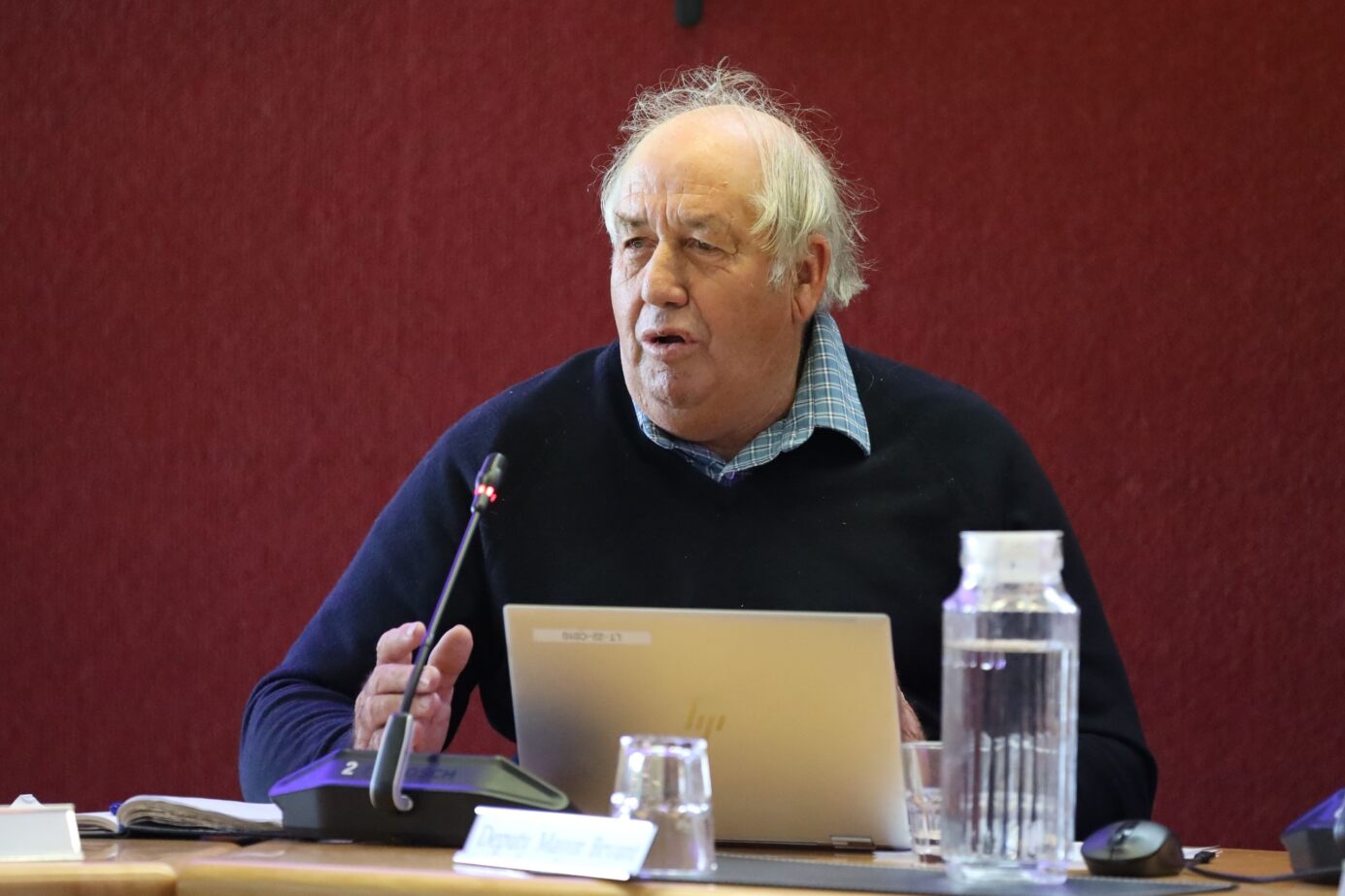$200k achieving ‘almost nothing’


Deputy mayor Stuart Bryant said the district had been set back a year by the need to re-consult. Photo: Max Frethey.
An atmosphere of anger and disappointment hung over the Tasman District Council chamber last Thursday after it estimates it spent around $200k achieving “almost nothing”.
Councillors made clear they were “extremely frustrated” with the Government’s new rule that dictates how councils set speed limits and plan to push back on Transport Minister Simeon Brown.
The rule, signed off by the Minister, blocks the district from lowering more than 100 speed limits despite the changes being consulted on and complying with the limits contained within the rule.
As a result, councillors grudgingly supported re-consulting the community on the changes that they already agreed to in July.
While the cost of re-consulting has not yet been calculated, it’s estimated that the council’s prior work on its now-ineffective speed management plan was about $200,000.
Councillor Chris Hill said the Government was being “disingenuous” by demanding councils cut back on spending while requiring the council to spend more money on re-consulting residents.
“I just find it really disrespectful and an immature approach, actually.”
Councillor Christeen Mackenzie described the issue as “completely outrageous”.
“This has been a massive cost to our ratepayers and to this point we’ve actually achieved almost nothing. It’s so incredibly frustrating.”
Councillor Jo Ellis was disappointed that the “substantial” community engagement into the region’s speed plan – which got more than 2200 submissions – couldn’t be used.
“It’s infinitely frustrating. I’ve seen the amount of work that has gone into this and has basically gone with the stroke of a pen, and it’s quite heartbreaking.”
Deputy mayor Stuart Bryant, who also chairs the regional transport committee, lamented that the need to re-consult was setting the council and the community back.
“We’ve lost a year’s work and it’s beyond belief how frustrating this is, not only for us and the staff but the community, that we’ve got to go through the process again,” he said.
“I have wondered at times if we should try pushing back on the Minister.”
Councillors around the table took up that suggestion, agreeing to write a letter to the Minister asking for approval to implement the speed limits the council has already consulted on.
However, transportation manager Jamie McPherson pointed out that most road-controlling authorities opposed the Government’s speed rule while it was a draft.
“We’ve had a voice already to tell the Minister what we thought. What’s changed now is that the final rule is actually worse than the draft that we submitted on. Maybe getting our point across again would be cathartic for us, but I’m not sure it would have an effect.”
Local Democracy Reporting has previously asked Minister Simeon Brown why Tasman must re-consult on speed limits that were largely in-line with both residents’ submissions and the Government’s own requirements.
He didn’t answer those questions but highlighted that consultation on the Government’s new rule highlighted “broad support” with 65 per cent of submitters supporting the reversing blanket speed limit reductions.
One of the key reasons behind the need to re-consult is the requirement for each specific proposed speed limit change to be accompanied by a cost-benefit disclosure statement.
Tasman included a generic network-wide cost-benefit analysis in its original consultation but not analyses specific to each road.
Variable speed limits outside of schools won’t need to be re-consulted on and must be implemented before July 2026.
Dozens of speed limits were slated to be lowered at the end of January 2025 under the council’s original speed plan and will now be delayed pending the re-consultation process.
The council is proposing to re-consult on lowering speeds for several high-risk rural roads, as well as slower base speeds outside rural schools, in the first quarter of 2025 with the aim of having them implemented in the third quarter.
Consultation on the remaining limits from the council’s original speed plan is expected to take place in 2025’s second quarter with the changes being implemented from 2026 and beyond.

